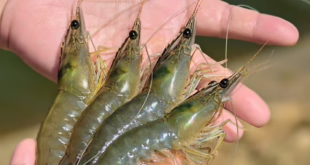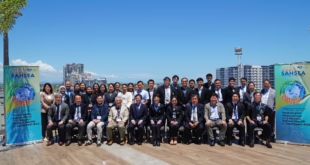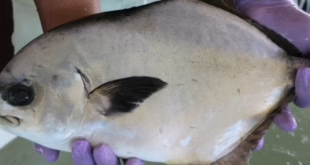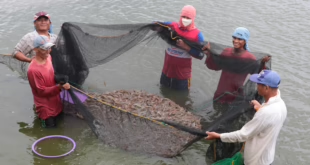By Development Communication Section

Mr. Ernest Chiam, SEAFDEC/AQD’s sandfish trainee, discussed to fellow sandfish trainees, SEAFDEC/AQD research staff and on-the-job trainees (from various fisheries schools in the Philippines) the concept and benefits of aquaponics on 4 May 2015 at AQD’s Tigbauan Main Station. Aquaponics, as described by Mr. Chiam, is the combination of aquaculture and hydroponics. It is a semi-closed system, where water flows between a fish tank and a plant growing bed. In this system, the fish waste in the water is used to supply nutrients to the plants. In return, the plants and the microorganisms absorb and degrade the harmful fish metabolites thereby cleaning the water that then goes back to the fish tank. Hence, according to Mr. Chiam, this provides a mutual beneficial environment for both the fish and the plants, and results in two crops (the fish and the plants).
Another advantage that Mr. Chiam pointed out is that the aquaponics system can be done in a small-scale or backyard set-up occupying an area of only about 16 square meters. Making root cuttings quicker since the plants are floating above water with little resistance for the roots to actually grow. He mentioned that a family can grow their own fish and vegetables in their backyard using this system. Suitable fishes cultured in an aquaponics system are catfish, tilapia and sea bass. On the other hand, vegetables produced in an aquaponics system include kang kong (water spinach or swamp cabbage), pechay, tomatoes and chili.
Mr. Chiam is a senior sustainable aquaculture officer at the World Wide Fund for Nature in Melaka, Malaysia and has been working with the institution for about eight years.


 SEAFDEC/AQD Southeast Asian Fisheries Development Center | Aquaculture Department
SEAFDEC/AQD Southeast Asian Fisheries Development Center | Aquaculture Department



